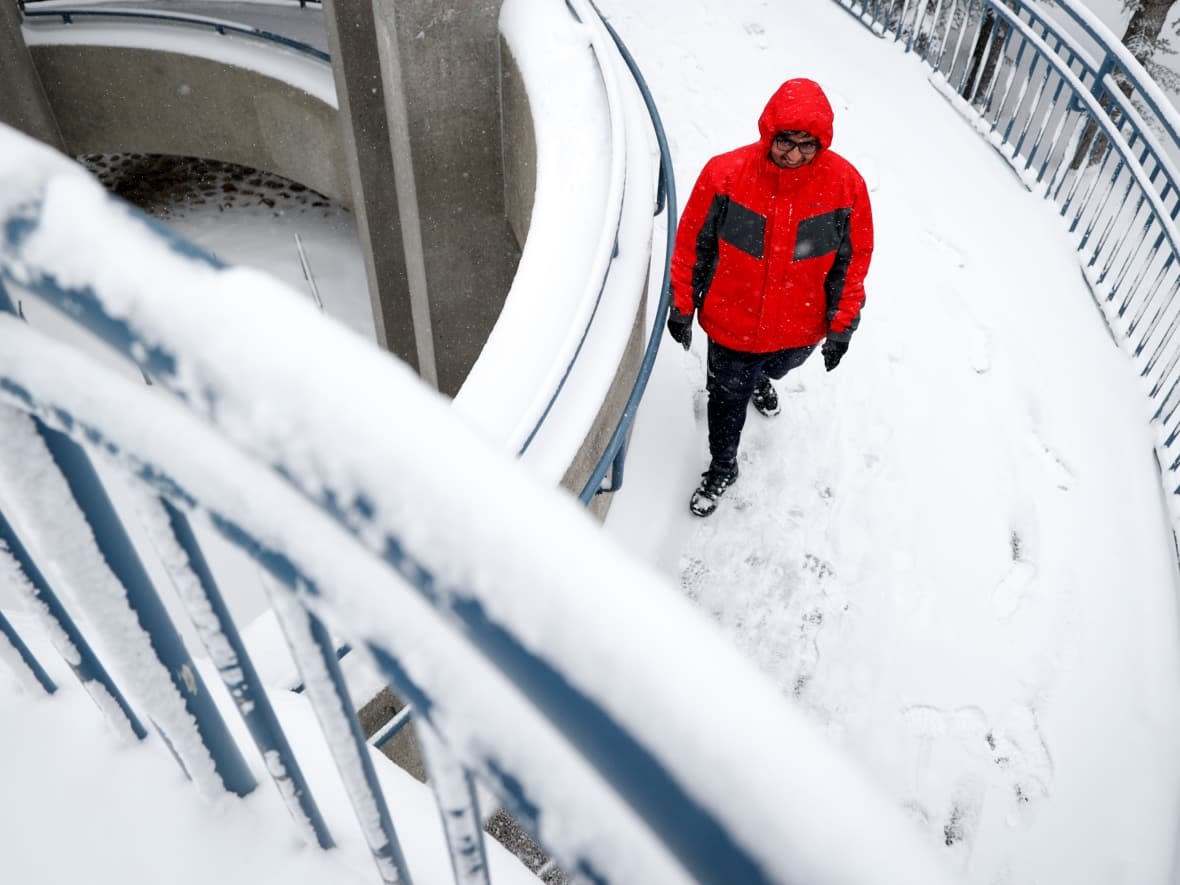Meteorological winter is over. It was one of Calgary's snowiest

Tuesday marked the last day of February and the end of meteorological winter. Fittingly, Calgarians were left with a parting shot of snow.
Meteorological winter is a three-month period (December, January and February) that meteorologists use to compare weather data across years. This is different from astronomical winter, which relates to the position of the Earth as it rotates around the sun.
"So far, we can say that this has been the 6th snowiest winter on record for Calgary, and that's out of 139 years of records," said Rob Griffith, a lead meteorologist with Environment Canada.
A decade of winter snowfall data for Calgary
Since December, roughly 82.6 centimetres of snow has fallen at Calgary International Airport, where the city's official snowfall totals are logged.
Over the last decade, only one winter was snowier, 2017-2018, when 86.5 centimetres fell between December and February.
Numbers since October
Of course, it snows in Calgary outside of the months included in meteorological winter.
Chris McGeachy, a spokesperson with Calgary's Mobility office, said that since October, the city has seen about 135 centimetres of snow, not including Tuesday's numbers.
"In terms of our snow response, [Tuesday's] snow is the 21st snow event since October 2022," he said.
Speaking on the Calgary Eyeopener, he noted that plows were out Tuesday morning clearing the high-traffic roads, such as Crowchild Trail, Glenmore Trail, and Memorial Drive.
This was the second time in as many weeks that city plows were out clearing the streets. Last week, a multi-day snow event left some parts of the city with up to 30 centimetres of light, fluffy snow.
Despite the snowy end to February, the city appears well prepared if more snow comes in the months ahead.
The city's snowfall budget for the calendar year is about $52 million, McGeachy said, adding that since January only about $10 million has been spent on snow removal. That leaves roughly $42 million for the rest of the year.
Slipping into spring
Along with the possibility of significant snow, the coming two months also bring the chance of huge temperature swings. It as, afterall, meteorological spring.
"The average high in March in Calgary is 4.4 [degrees] but the record high is 25," Griffith said. "It is possible to get above 20 degrees, especially toward the latter part of the month."
The swinging temperatures set the stage for Calgary's freeze-thaw dynamic, where ice and snow melt during the day but freeze when temperatures dip at night. On sidewalks, the melt puddles can quickly turn into slippery hazards.
Stuart Brideaux, a spokesperson with EMS in Calgary, said that during freeze-thaw periods paramedics might respond to double digit calls on Calgary morning, generally for broken or sprained wrists and ankles.
"People fall in an almost unprotected manner, because it happens so fast," he said.
Despite the potential for surging temperatures, March is typically Calgary's snowiest month, with an average of about 23 centimetres of snow.
According to Griffith, this is due to the retreat of Arctic air and the jetstream setting up over southern Alberta, bringing more consistent moisture.
As for the short-term outlook, a warming trend looks to extend through the weekend, but cooler temperatures appear to be in store for next week.
"Things are going to below average into the start of March," Griffith said.


